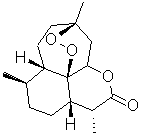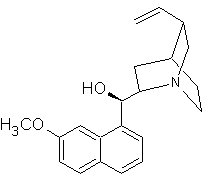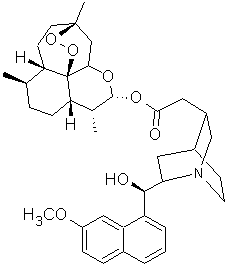Combining drugs can make them more effective
C.H. Arnoud, "Drug Hybrids Enter the Fray," Chemical & Engineering News 2007, 85(46), 45-48 (September 12, 2007)
J.J. Walsh et al, Bioorganic & Medicinal Chemistry Letters 2007, 17, 3599-3602
A new approach to drug design is to chemically tether two drugs that work well together. Some approaches tether a drug to something that mitigates side effects; but the approach shown here combines two effective drugs to make one that is more effective than either one, or even a mixture of the two.
Artemisinin is a liphophilic drug that fights malaria parasites effectively and quickly, but can be difficult to get through (lipid bilayer) cell membranes. Quinine is a hydrophilic drug that gets into cells just fine, but acts against malaria only over the longer term and does not kill the parasite completely.
Tethering artemisinin to quinine via a simple ester linkage improves delivery of artemisinin to cells, and the tethered compound proved to be more effective than artemisinin or quinine alone, and more effective than a cocktail of the two drugs.


